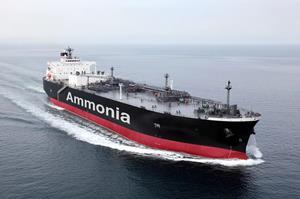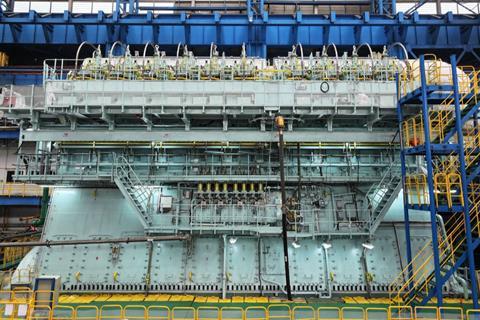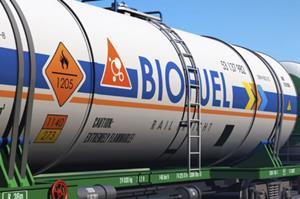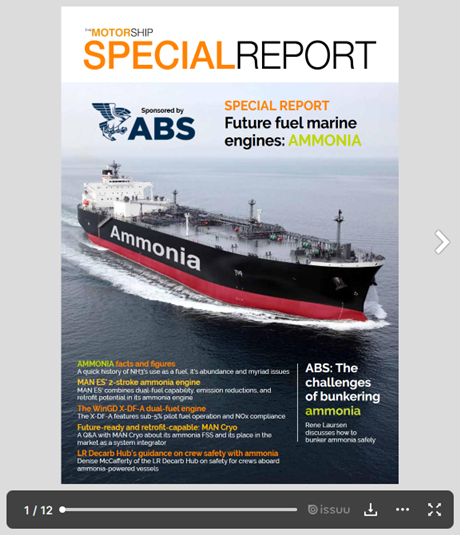- News
- Subscribe

Get full access to The Motorship content
Including the digital magazine, full news archive, podcasts, webinars and articles on innovations and current trends in the shipping industry.
- Expert analysis and comment
- Unlimited access to in-depth articles and premium content
- Full access to all our online archive
Alternatively REGISTER for website access and sign up for email alerts
- Special Reports
Ammmonia
Methanol
BioFuel & Clean Diesel
Nuclear
LNG





Using an abundant, if toxic, resource to power the maritime fleet. A mature future fuel already in use - but will it become dominant? Numerous NGOs protested against the IMO earlier this year putting biofuels in its Global Fuel Standard, but the “fuel versus food” debate seems to have been solved by deriving fuels from waste. Technically the cleanest possible fuel source available to the maritime world and one that has the longest history, dating back to the 1950s. Why is it not in common, non-military use? LNG is currently the most popular lower carbon fuel, but with bio and e-LNG it could move beyond its current transition fuel status supported by extensive existing infrastructure. Read More Read More Read More Read More Read More
- Industry Database
- Events

Propulsion & Future Fuels Conference 2025
The Motorship’s Propulsion & Future Fuels is the leading international conference on powering shipping’s emissions-cutting ambitions.
The 2025 Conference will take place from 25th - 27th November in Hamburg, Germany and will offer a meeting place to learn, discuss and knowledge-share the latest developments in efficient power and propulsion technology plus alternative low flashpoint and low carbon fuels.
Click here for more information
Ammonia - Issue #1
A word from the editor…
The shipping world is at a crossroads as it approaches its net zero target of 2050 and is in need of an alternative to HFO. In the first of a series of Special Reports, we look at ammonia. Yes, that famously toxic substance. Surprisingly, it’s fast becoming one of the hottest candidates to replace fossil fuels at sea.
Why? Well, it’s carbon-free when burned, doesn’t belch sulphur oxides or soot into the air, and — if made from renewables — could slash greenhouse gases by up to 90%. That’s enough to make the International Maritime Organization (IMO) swoon.
But there’s a catch. Several, actually. Ammonia, as said, is toxic. As in, really toxic. It’s also corrosive, and unlike many fuels, it doesn’t like to catch fire — which is great for safety, but weirdly complicated for engines. So, we spoke to shipping’s brightest minds who are scrambling to rewrite safety rules, redesign fuel systems, and train crews not to, you know, poison themselves.
Big names like ABS, Lloyd’s Register and DNV are drafting the new playbook. And engine makers like WinGD are building ammonia-ready monsters — the kind that don’t need exhaust scrubbers to meet the IMO’s strict pollution limits. Meanwhile, hardware firms like HEROSE are busy inventing valves and pumps that won’t melt, leak, or explode when exposed to this grumpy little molecule.
Oddly enough, we already have over 250 ammonia terminals scattered around the globe (thank you, fertilizer industry), which gives it a leg up on rivals like hydrogen. Ships are being ordered with “ammonia-ready” stamped on them, and ports are figuring out how to safely pump this noxious stuff into bunkers.
Of course, not everyone’s sold. Critics worry about toxicity and emissions like nitrous oxide — no, not the laughing gas. But despite its flaws, ammonia is tough to ignore. It’s carbon-free, it’s scalable, and it’s already getting real-world traction.
So no, it’s not perfect. But if the world’s going to keep running its global trade, it’s reliant on shipping. And with stringent rules on emissions coming thick and fast, HFO simply doesn’t cut it anymore. An already widely available substance might be the solution needed.
- David Stevenson, Editor, The Motorship
dstevenson@mercatormedia.com
This is Premium Content
Already a member? Sign in now

Want to learn more about Ammonia as a future maritime fuel?
Engage with senior executives at Propulsion & Future Fuels - a meeting place to learn, discuss and share knowledge of the latest developments in efficient propulsion technology and low flashpoint, low carbon fuels.
In this issue:
Fueling the future: Alfa Laval powers ahead with ammonia innovation
A look at Alfa Laval’s ammonia fuel supply system, which is already in demand
ABS on the challenges of bunkering ammonia
ABS’ Rene Laursen speaks to The Motorship about how it’s making ammonia bunkering safer.
Is ammonia the first truly green ship fuel?
A look at the facts and figures surrounding ammonia’s use as a marine fuel.
MAN ES’ ammonia-powered two-stroke engine
MAN ES’ 2-stroke ammonia engine’s origin and development.
The Motorship’s special report on ammonia
As the maritime industry embarks on an unprecedented voyage towards carbon neutrality, ammonia is emerging as one of the most promising next-generation marine fuels, writes David Stevenson.
The WinGD X-DF-A dual-fuel engine
Our ammonia Special Report details WinGD’s dual-fuel ammonia engine.
DNV charting ammonia’s course through regulatory waters
A look at how the regulatory framework is evolving around the use of ammonia as a marine fuel.
Future-ready and retrofit-capable: MAN Cryo on ammonia fuel supply
An interview with Justin Pearce, process engineer and technical project manager at MAN Cryo about the company’s ammonia fuel supply system.
LR Decarb Hub’s guidance on crew safety with ammonia
We spoke to Denise McCafferty from the Lloyd’s Register Decarbonisation Hub about how its formulating crew safety for handling ammonia












